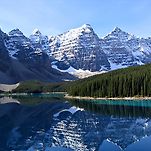<div class="figure-img" data-ke-type="image" data-ke-style="alignCenter" data-ke-mobilestyle="widthOrigin"><img src="https://t1.daumcdn.net/cafeattach/1WdXn/83abd58532222d4b7d27a1d0495799fdd6256ef1" class="txc-image" data-img-src="https://t1.daumcdn.net/cafeattach/1WdXn/83abd58532222d4b7d27a1d0495799fdd6256ef1" data-origin-width="259" data-origin-height="194"></div><p>-&#160;점박이붉바리&#160;Hind,&#160;Red <br>.&#160;학명;&#160;Epinephelus&#160;guttatus <br>.&#160;서식지;&#160;따뜻한&#160;물의&#160;깊이&#160;30미터내외의&#160;산호나&#160;바위바닥&#160;선호 <br>.&#160;통명;&#160;점박이붉바리 <br>.&#160;특징;&#160;위는&#160;녹회색에거&#160;연갈색이고&#160;아래는&#160;흰색으로&#160;주황색에서&#160;갈색의&#160;반점 <br>.&#160;먹이와&#160;요리법;&#160;일반적인&#160;조리로&#160;섭취 <br>1&#160;학명과&#160;서식지 <br>-&#160;학명;&#160;Epinephelus&#160;guttatus <br>-&#160;서식지 <br>.&#160;온도와&#160;깊이;&#160;따뜻한&#160;물의&#160;깊이&#160;30미터내외의&#160;산호나&#160;바위바닥&#160;선호 <br>.&#160;지역;&#160;서대서양의&#160;노스캐롤라이나에서&#160;브라질에&#160;이르는&#160;열대와&#160;온대해안 <br>.&#160;바닥에서&#160;1-5마리의&#160;암컷이&#160;동거하며&#160;그중&#160;가장&#160;큰&#160;것이&#160;수컷으로&#160;성전환&#160; <br>In&#160;the&#160;western&#160;Atlantic,&#160;red&#160;hind&#160;occur&#160;from&#160;North&#160;Carolina&#160;and&#160;Bermuda&#160;south&#160;to&#160;the&#160;Bahamas,&#160;the&#160;southern&#160;Gulf&#160;of&#160;Mexico,&#160;and&#160;to&#160;Brazil.&#160;They&#160;are&#160;common&#160;in&#160;the&#160;Caribbean,&#160;occasional&#160;in&#160;the&#160;Bahamas&#160;and&#160;Florida,&#160;and&#160;rare&#160;north&#160;of&#160;Florida. <br>Habitat.&#160;Red&#160;hind&#160;are&#160;one&#160;of&#160;the&#160;most&#160;common&#160;grouper&#160;in&#160;the&#160;West&#160;Indies,&#160;inhabiting&#160;shallow&#160;inshore&#160;reefs&#160;and&#160;rocky&#160;bottoms&#160;at&#160;depths&#160;of&#160;10&#160;to&#160;160&#160;feet.&#160;In&#160;Florida&#160;and&#160;the&#160;Bahamas&#160;they&#160;are&#160;usually&#160;found&#160;in&#160;quieter,&#160;deeper&#160;waters.&#160;Red&#160;hind&#160;are&#160;solitary&#160;and&#160;territorial&#160;fish,&#160;often&#160;found&#160;drifting&#160;or&#160;lying&#160;motionless&#160;along&#160;the&#160;bottom,&#160;camouflaged&#160;by&#160;their&#160;surroundings. <br>2&#160;통명 <br>-&#160;영어;&#160;strawberry&#160;grouper,&#160;speckled&#160;hind;&#160; <br>French:&#160;m&#233;rou&#160;couronn&#233;;&#160;Spanish:&#160;mero&#160;colorado,&#160;tofia. <br>-&#160;한글;&#160;점박이붉바리 <br>3&#160;개요 <br>-&#160;길이;&#160;76센티&#160;이내,&#160;평균&#160;40센티 <br>-&#160;무게;&#160;10파운드이내,&#160;평균&#160;4파운드 <br>The&#160;red&#160;hind&#160;can&#160;grow&#160;to&#160;2&#160;feet,&#160;although&#160;it&#160;is&#160;usually&#160;less&#160;than&#160;15&#160;inches&#160;long;&#160;most&#160;12-inch&#160;and&#160;larger&#160;fish&#160;are&#160;males.&#160;Although&#160;it&#160;can&#160;reach&#160;10&#160;pounds,&#160;the&#160;red&#160;hind&#160;is&#160;rarely&#160;larger&#160;than&#160;4&#160;pounds&#160;in&#160;weight;&#160;the&#160;all-tackle&#160;world&#160;record&#160;is&#160;for&#160;a&#160;6-pound,&#160;1-ounce&#160;fish&#160;taken&#160;off&#160;Florida.&#160;The&#160;red&#160;hind&#160;can&#160;live&#160;for&#160;17&#160;years&#160;or&#160;longer. <br>4&#160;특징 <br>-&#160;등지느러미가&#160;시작되는&#160;부분에서&#160;가장&#160;깊은&#160;견고하고&#160;압축된&#160;몸 <br>-&#160;길이는&#160;깊이의&#160;3배로&#160;&#51686;은편이고&#160;꼬리는&#160;약간&#160;볼록 <br>-&#160;위는&#160;녹회색에거&#160;연갈색이고&#160;아래는&#160;흰색으로&#160;주황색에서&#160;갈색의&#160;반점 <br>-&#160;아가미덮개&#160;가장자리에&#160;3개의&#160;편평한&#160;가시 <br>-&#160;등지느러미에&#160;11개의&#160;가시와&#160;15개의&#160;연조 <br>-&#160;뒷지느러미에&#160;3개의&#160;가시와&#160;8개의&#160;연조 <br>A&#160;grouper&#160;of&#160;the&#160;Serranidae&#160;family,&#160;the&#160;red&#160;hind&#160;is&#160;an&#160;important&#160;fish&#160;in&#160;the&#160;Caribbean,&#160;where&#160;large&#160;numbers&#160;are&#160;caught&#160;every&#160;year.&#160;It&#160;has&#160;excellent&#160;white,&#160;flaky&#160;meat&#160;that&#160;is&#160;usually&#160;marketed&#160;fresh. <br>Identification.&#160;As&#160;with&#160;all&#160;grouper,&#160;the&#160;red&#160;hind&#160;has&#160;a&#160;stout&#160;body&#160;and&#160;a&#160;large&#160;mouth.&#160;It&#160;is&#160;very&#160;similar&#160;to&#160;the&#160;rock&#160;hind&#160;in&#160;appearance,&#160;although&#160;the&#160;red&#160;hind&#160;is&#160;slightly&#160;more&#160;reddish&#160;brown&#160;in&#160;color,&#160;with&#160;dark&#160;red-brown&#160;spots&#160;above&#160;and&#160;pure&#160;red&#160;spots&#160;below&#160;over&#160;a&#160;whitish&#160;background.&#160;It&#160;differs&#160;from&#160;the&#160;rock&#160;hind&#160;in&#160;having&#160;no&#160;spots&#160;on&#160;the&#160;tail&#160;or&#160;the&#160;dorsal&#160;fin&#160;and&#160;no&#160;dark&#160;splotches&#160;on&#160;the&#160;back&#160;or&#160;the&#160;tail.&#160;The&#160;outer&#160;edges&#160;of&#160;the&#160;soft&#160;dorsal,&#160;the&#160;caudal,&#160;and&#160;the&#160;anal&#160;fins&#160;are&#160;blackish&#160;and&#160;are&#160;sometimes&#160;also&#160;edged&#160;in&#160;white.&#160;It&#160;can&#160;pale&#160;or&#160;darken&#160;to&#160;blend&#160;with&#160;surroundings. <br>5&#160;먹이와&#160;요리법 <br>-&#160;먹이;&#160;새우를&#160;주로&#160;먹고&#160;게,&#160;갑각류,&#160;물고기,&#160;문어도&#160;섭취 <br>-&#160;3월부터&#160;7월사이에&#160;40미터&#160;깊이의&#160;20도의&#160;물에&#160;산란 <br>-&#160;카리브해에서&#160;가장&#160;중요한&#160;식용생선이자&#160;미국에도&#160;수출 <br>-&#160;창,&#160;갈고리,&#160;줄,&#160;덫&#160;등으로&#160;포획하거나&#160;낚시 <br>-&#160;일반적인&#160;조리로&#160;섭취 <br>Spawning&#160;takes&#160;place&#160;from&#160;March&#160;through&#160;July&#160;in&#160;68°&#160;to&#160;82°F&#160;waters&#160;at&#160;depths&#160;of&#160;100&#160;to&#160;130&#160;feet.&#160;At&#160;this&#160;time,&#160;mature&#160;fish&#160;of&#160;age&#160;3&#160;and&#160;older&#160;form&#160;large&#160;clusters&#160;over&#160;rugged&#160;bottoms.&#160;The&#160;female&#160;lays&#160;pelagic&#160;eggs&#160;in&#160;numbers&#160;between&#160;90,000&#160;and&#160;more&#160;than&#160;3&#160;million.&#160;Some&#160;fish&#160;undergo&#160;sexual&#160;inversion. <br>Food&#160;and&#160;feeding&#160;habits.&#160;Red&#160;hind&#160;feed&#160;on&#160;various&#160;bottom&#160;animals,&#160;such&#160;as&#160;crabs,&#160;crustaceans,&#160;fish,&#160;and&#160;octopus;&#160;they&#160;hide&#160;in&#160;holes&#160;and&#160;crevices&#160;and&#160;capture&#160;prey&#160;by&#160;ambush&#160;or&#160;after&#160;a&#160;short&#160;chase. </p>
<!-- -->
카페 게시글
음식
- 점박이붉바리 Hind, Red
박대선
추천 0
조회 45
23.05.10 19:51
댓글 0
다음검색



